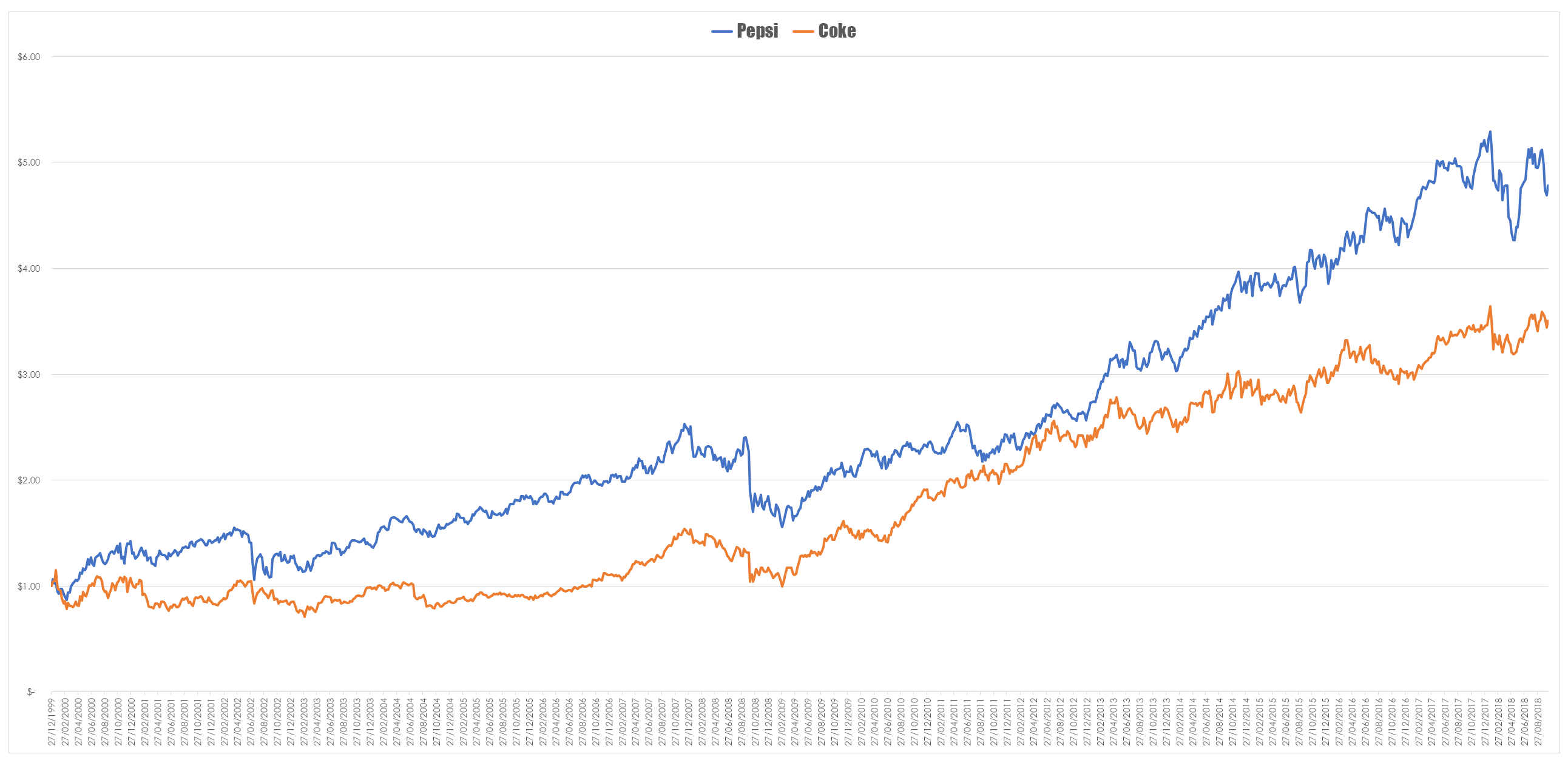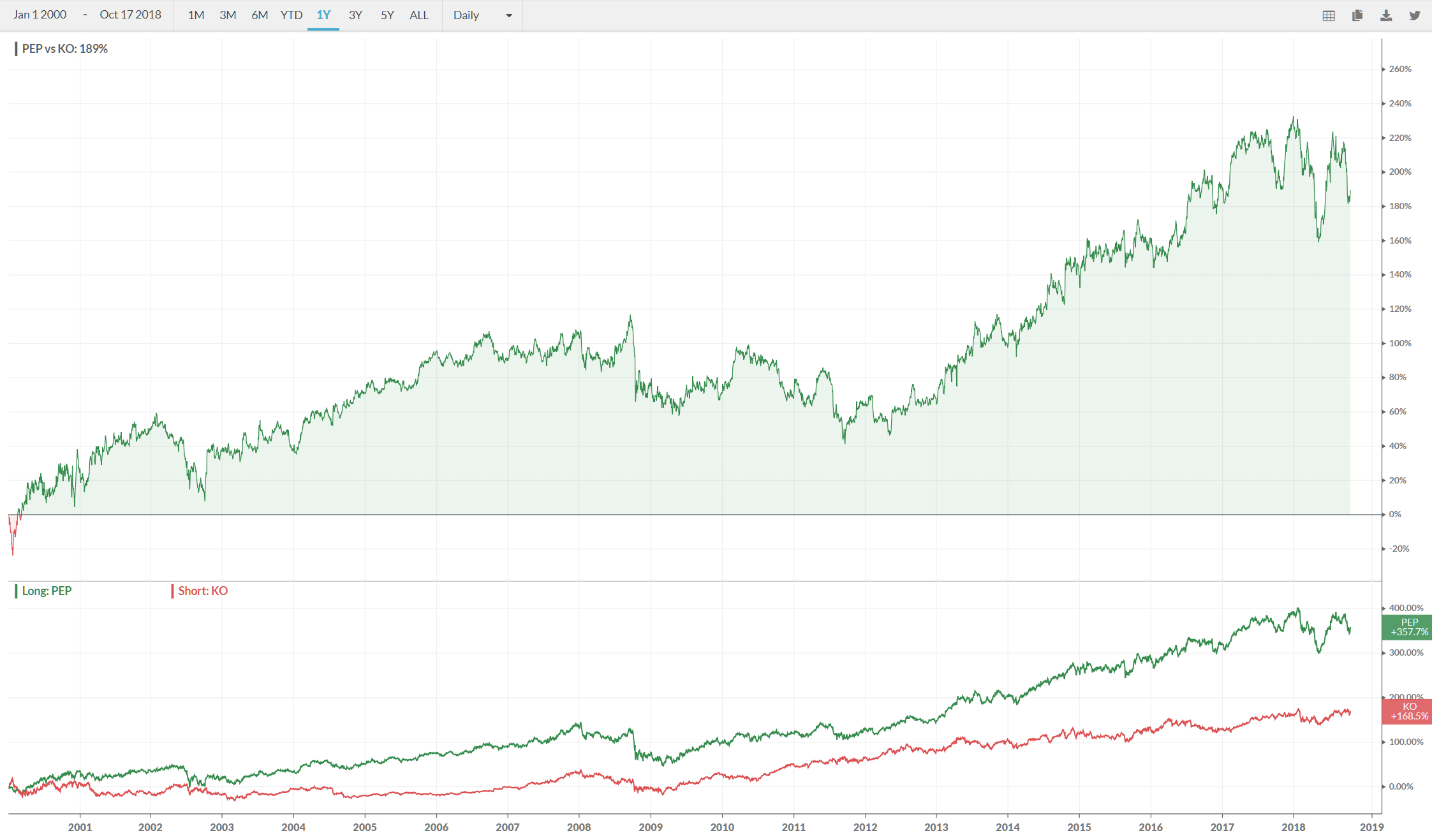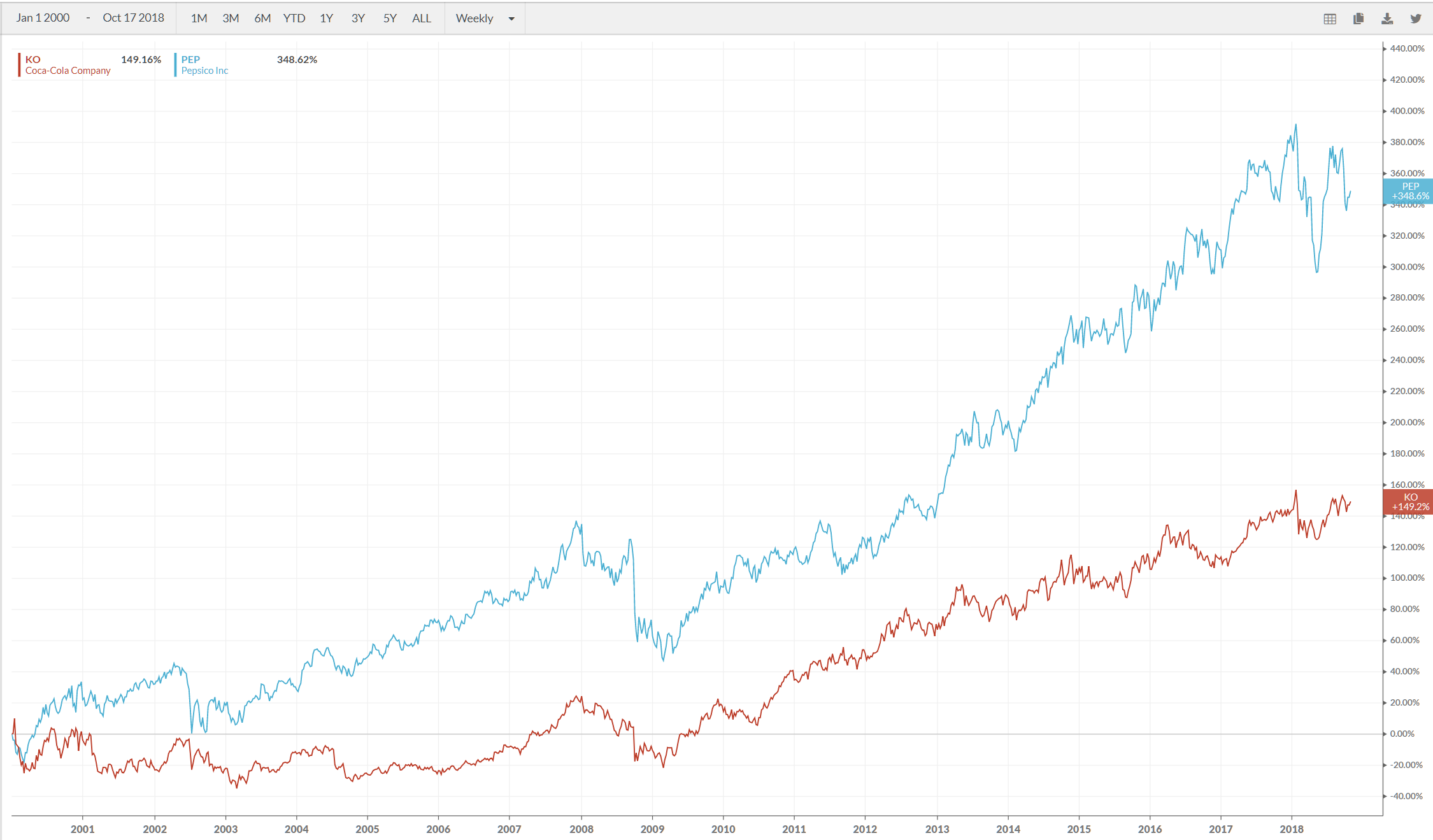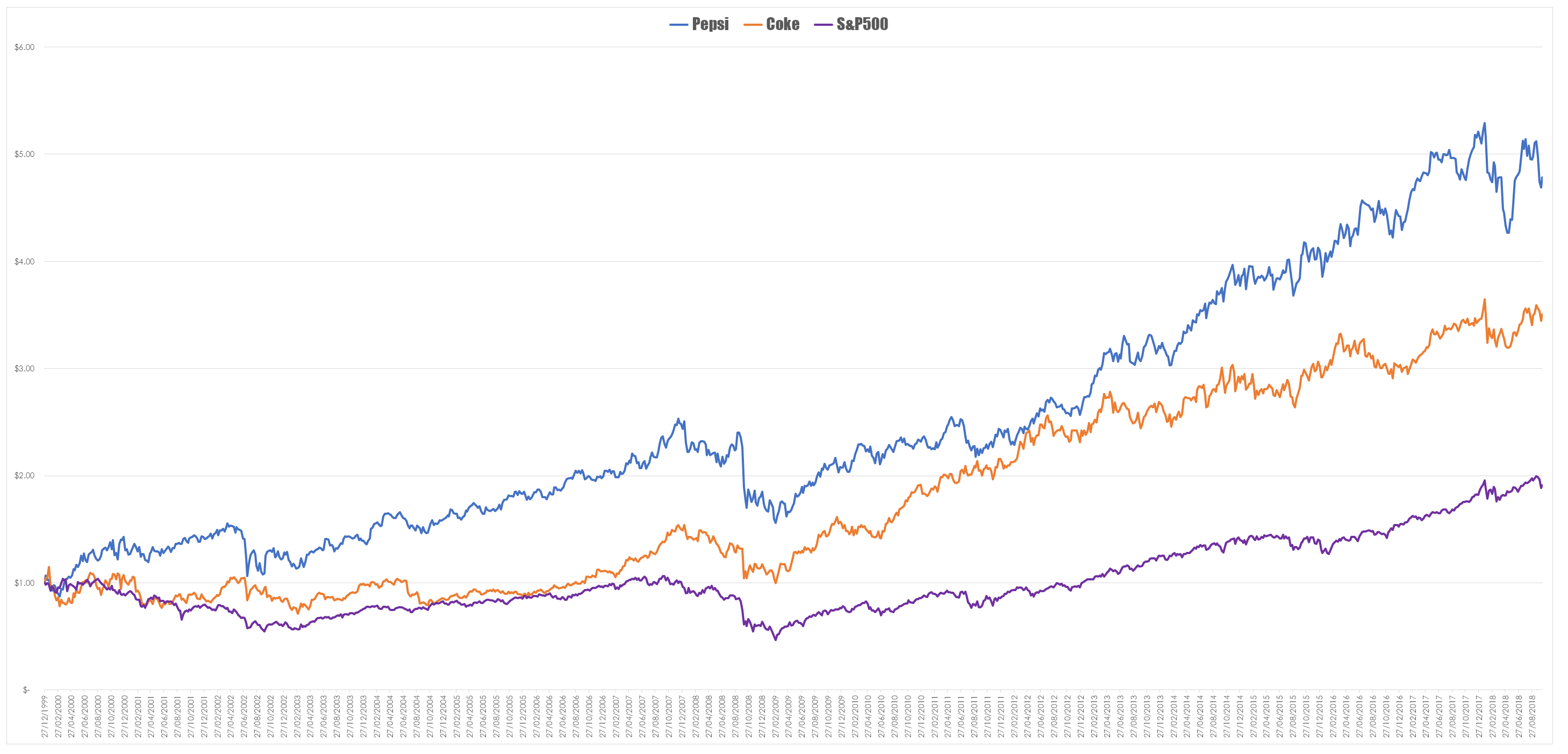The thing that got me thinking about this idea was a piece that flashed briefly across one of my aggregators about which was better Coke (KO) or Pepsi (PEP) and I dont mean in the ways of the old Pepsi challenge that some of us would remember. To be honest I didn’t pay it much attention since it was basically narrative with a few charts about not very important things such as earnings and no mention of price which is the ultimate arbiter of all things trading. But it did get me thinking about where trading ideas come from. Traditional finance seems to get the process backwards in that they come to a conclusion such as I like Coke therefore everyone likes Coke so lets all buy Coke. They then attempt to back fill this conclusion in a frantic display of confirmation bias. The analysts that worked at the same firms as I did back in the day used to adopt this approach. They would go out and see a business, the business would give them a vastly expensive lunch somewhere fancy and then to repay the favour the analysts would come back to the office and write a glowing report about the company in an attempt to score another lunch. Not at all very scientific.
The process by which a trading idea is generated and by extension a trading system is a logical one where the conclusion you reach might not in any way support your original idea. The process is basically observation, hypothesis, data collection, analysis and conclusion. It is much like the scientific method. So based on the notion of comparing Coke and Pepsi I thought it would be a bit of fun to look at building a trading idea around these two stocks. My original hypothesis is that these are two stocks in the same industry that have enjoyed slightly different fortunes, they might therefore lend themselves to a pairs trade. A pairs trade is based upon the notion that companies display linked relationships that can be exploited by going long one member of the pair and short the other. The first step was to gather some data regarding the relative performance of the two instruments in order to get a sense of how they move.
It is here at this initial step that the idea collapses simply because the two instruments seem upon observation to move together in a similar manner. In pairs trading you want instruments that have diverging trajectories and upon looking at the correlation coefficient of the two the R-squared value was very high at 0.92. This correlation would limited any potential at pairs trading in effective manner. However, since I had the data handy I thought it would be interesting to proceed with the exercise simply to see where it lead.
The first thing that is noticed when plotting the relative performance is that irrespective of needless metrics such as numbers shipped, earnings, dividend growth or personal preference Pepsi has been the superior investment since the turn of the century. Simply converting the price data to a normalised form has given us some clues and this fits with my overarching belief that the market will tell us everything we need to know if we just listen to it. So if we stick with the original idea that this is a pairs trade where one member of the pair is bought and the other is sold we can test to see how this idea would work out. The chart below is a performance graphing showing the relative percentage return generated when you go long Pepsi and short Coke.
As you can see the idea is actually profitable but it is only profitable because of the performance of Pepsi – it is not the result of the combined performance of both instruments. You can see this when you look at the expanded relative performance of both instruments.
Going long Pepsi is the most profitable idea – shorting Coke at the same time acts as a drag on performance. The idea is further invalidated by simple testing. What did surprise me when I started this exercise was how well both instruments had performance over the longer term. These are both what I would call legacy companies that get somewhat overlooked in the rush for the latest and greatest new fangled internet type thingy company. Both companies substantially outperform the index over the long term as can be seen in the chart below.
The lesson from this sort of exercise is simple – price tells you everything you need to know. As to whether Pepsi or Coke is superior in terms removed from investing is an individual choice. However, for some odd reason I was always a fan of RC Cola when I was younger.









I hated TAB – but I liked the Elle Mc Pherson commercial